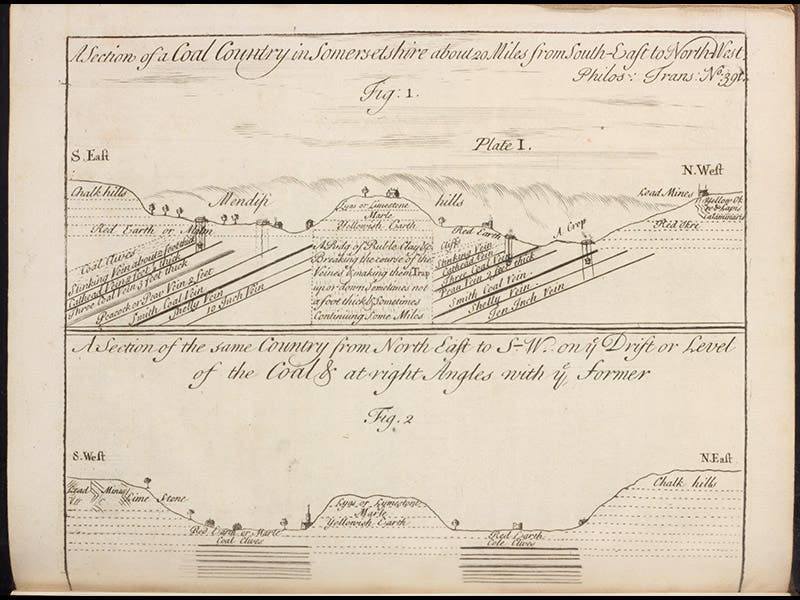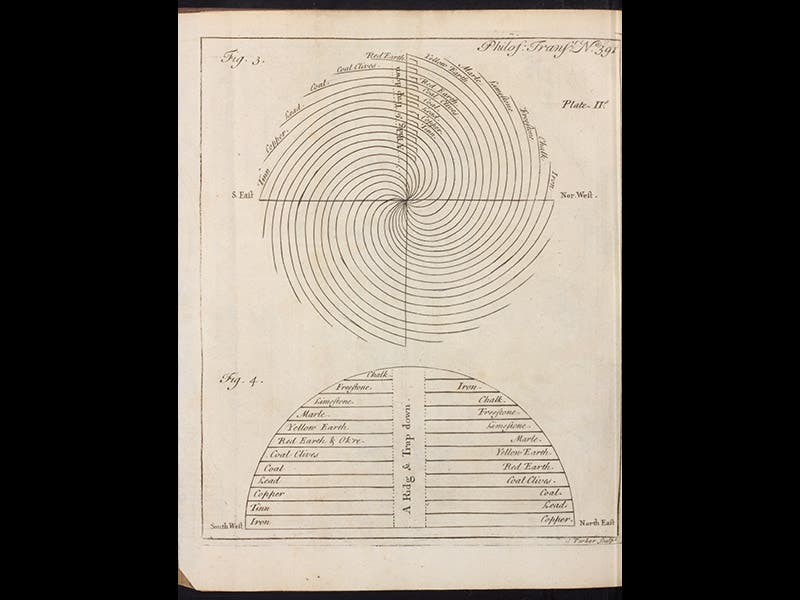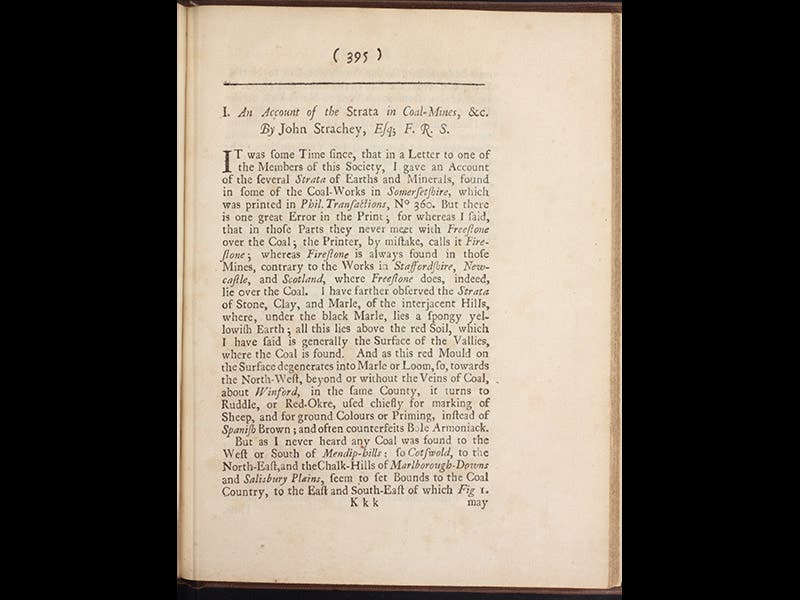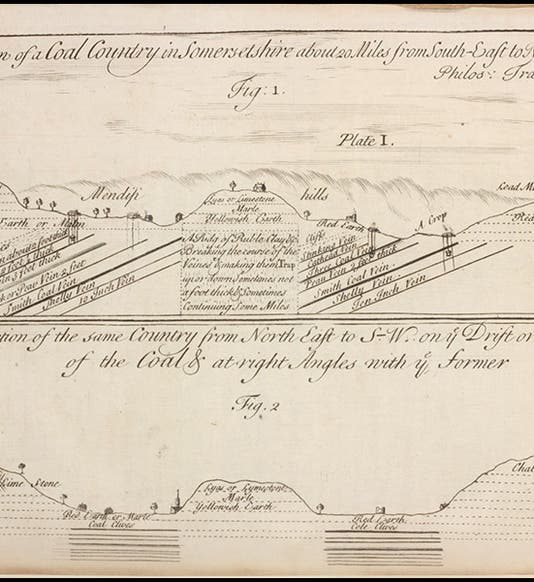Scientist of the Day - John Strachey





John Strachey, an English geologist, was born May 10, 1671. In the course of a study of the strata in the coal fields of Somerset (first and third images), Strachey wondered why all the rock strata in England have a general dip to the east, which is a geologist’s way of saying that underlying strata come to the surface as you go west. Strachey proposed that when all the minerals of an originally fluid earth were settling into layers, God gave the earth its daily spin. The layers were consequently stretched out, overlapping one another like the leaves of a rolled up paper book, as Strachey put it. Consequently, every stratum comes to the surface at some point, no matter how far down it may be at some other point. His model is most easily grasped with a diagram, which Strachey published with his paper in 1725 in the Philosophical Transactions of the Royal Society of London (second image). We see the original horizontal layers at the bottom, and the rolled-up-pages-of-a-book model at the top.
In the penultimate sentence of his short article, Strachey commented that “were it practicable to sink to the Center of the Earth, all the Strata that are, would be found in every Part, and according to the Poet, Ponderibus librata suis” (fourth image). In the interest of emphasizing the value of a classical education, we note that the poet was Ovid, in his Metamorphoses, and that the same phrase, ponderibus librata suis (which means “balanced by its own weight”) appears over the arm of the balance in Giambattista Riccioli’s famous frontispiece to his New Amagest of 1651, where a rather different hypothesis was being weighed in the balance (detail, fifth image).
Dr. William B. Ashworth, Jr., Consultant for the History of Science, Linda Hall Library and Associate Professor, Department of History, University of Missouri-Kansas City. Comments or corrections are welcome; please direct to ashworthw@umkc.edu.






